Murten
Murten (German, pronounced [ˈmuːɐ̯tn̩] ) or Morat (French, pronounced [mɔʁa]; Arpitan: Morât [mɔˈʁa] ) is a bilingual municipality and a city in the See district of the canton of Fribourg in Switzerland.
It is located on the southern shores of Lake Morat (also known as Lake Murten). Morat is situated between Neuchâtel and Fribourg and is the capital of the See/Lac District of the canton of Fribourg. It is one of the municipalities with a majority (about 75%) of German speakers in the predominantly French-speaking Canton of Fribourg.
On 1 January 1975 the former municipality of Burg bei Murten merged into the municipality of Murten. It was followed on 1 January 1991 by the former municipality of Altavi...Read more
Murten (German, pronounced [ˈmuːɐ̯tn̩] ) or Morat (French, pronounced [mɔʁa]; Arpitan: Morât [mɔˈʁa] ) is a bilingual municipality and a city in the See district of the canton of Fribourg in Switzerland.
It is located on the southern shores of Lake Morat (also known as Lake Murten). Morat is situated between Neuchâtel and Fribourg and is the capital of the See/Lac District of the canton of Fribourg. It is one of the municipalities with a majority (about 75%) of German speakers in the predominantly French-speaking Canton of Fribourg.
On 1 January 1975 the former municipality of Burg bei Murten merged into the municipality of Murten. It was followed on 1 January 1991 by the former municipality of Altavilla and on 1 January 2013 by the former municipality of Büchslen. On 1 January 2016 the former municipalities of Courlevon, Jeuss (Jentes), Lurtigen (Lourtens) and Salvenach (Salvagny) merged into Morat (Murten). On 1 January 2022 the former municipalities of Galmiz, Gempenach and Clavaleyres (Canton of Bern) merged into the municipality of Murten.
The oldest archaeological traces of a settlement in the perimeter are from the Mesolithic (8200-5500 BC). The Mesolithic finds are mostly small flint shards for use in weapons or tools. These flints were produced mostly in the swampy lowlands east of the city at Murten-Combette and Murten-Ober Prehl. While many of these flint objects are in museums, the exact discovery sites were not properly documented and have been lost or covered by later excavations. Several other sites were discovered during construction of the A1 motorway in 1976–95. These settlements are from the Neolithic (5500-2500 BC) and the Bronze Age (2300-800 BC). Murten Pré de la Blanc was used in the Neolithic and middle Bronze Age, while the sites Murten-Lowenberg, Murten-Ober Prehl and Chantemerle 1 are from the Late Bronze Age. The cemetery at Lowenberg was used for more than a millennium, from the middle Bronze Age to the La Tène period. The nearby necropolis holds a number of Hallstatt era graves. The remains of a large Roman villa from the end of 1st or early 2nd century BC and a piece of a Roman road have also been found.[1]
 Berntor/Porte de Berne in Morat
Berntor/Porte de Berne in MoratThe town's name derives from the Celtic word moriduno, meaning "lakeside fortress"[citation needed]. It was first mentioned in 515 as a defensive place called "Muratum".[1] In 1013, the area was fortified by King Rudolph III of Burgundy. The fortifications were attacked and occupied by Odo II of Blois-Champagne in 1032 during the conflict after Rudolph's death. Odo only held Murten briefly before Emperor Conrad II besieged and destroyed the castle. In 1079 Emperor Henry IV granted Muratum and other properties to the Bishop of Lausanne.[1]
Murten was founded by Duke Berchtold IV[1][2] of Zähringen or Landri de Durnes, the Bishop of Lausanne[1] in either 1159[2] or during the 1170s or 1180s[1] next to the fortress. Murten was first mentioned as a city in 1238. After his death the German emperor Frederic II recognized Murten as a "Free Imperial Town".[2] At that time the emperor himself lived in the south of Italy and a small town north of the Alps was not his concern. It did not last long – in 1255 Murten fell under the protection of Count Peter of Savoy. When Philip I of Savoy refused to give Morat to him, King Rudolph of Habsburg seized it as a royal estate. After Rudolf's death Amadeus V of Savoy, bought the city again in 1291, but lost it to King Albert I of Germany again. The House of Savoy bought the city and surrounding lands again in 1310 for 4,000 marks of silver. This time the city remained under Savoy control. During this time, Murten began to develop alliances and ties with the surrounding Swiss cities. In 1245 they created a treaty with Fribourg, followed in 1335 with Bern.[1]
A fire in 1416 led to rebuilding in stone.
 The battle of Morat
The battle of MoratOn 22 June 1476, Charles the Bold, Duke of Burgundy, laid siege to the place in an action known as the Battle of Morat. The town hung on for 13 days but finally was saved by the Bernese army. The enemy's army was destroyed completely — some 10,000 Burgundians were killed. Since then, Murten celebrates the victory every year on June 22.
From 1484 on, and for 300 years, Murten was ruled by the two cantons — Bern and Fribourg. In 1530, under pressure from Bern, Murten adopted the Protestant Reformation, after the preacher Guillaume Farel began to preach the new faith. Murten's Protestant faith often brought the city into conflicts with the more conservative, Catholic Fribourg.[1]
During the second half of the 17th century the city grew wealthy on trade over the road from Bern to Vaud and along the Broye river to Yverdon. Most of the houses in the city were rebuilt with this wealth. Although Bern and Fribourg had already granted Murten permission in 1584 to form guilds, the coopers, carpenters, locksmiths and cabinet makers first formed their guilds in 1731. In the late 17th century a brickyard and a brewery were built outside of town.[1]
Following the 1798 French invasion, under the Helvetic Republic Murten was part of the Canton of Sarine and Broye. When the Republic collapsed, the Act of Mediation in 1803 gave the town to the canton of Fribourg.
 Aerial photograph from 300 m by Walter Mittelholzer (1919)
Aerial photograph from 300 m by Walter Mittelholzer (1919) Morat harbor
Morat harborIndustrialization began in Murten in the early 1850s when Etienne-Ovide Domon founded a watch factory, which was later moved to Montelier[citation needed]. The Petitpierre family operated an absinthe distillery between 1831 and 1901[citation needed] and Oskar Roggen ran a winery from 1888 to 1913. Since 1855 Murten has had its own newspaper, the "Murtenbieter". In the 20th century other industries settled in Murten; especially in the field of precision engineering, electronics and food. In 1973, the Swiss Federal Railways bought Löwenberg Castle and lands from the family de Rougemont, to establish a training center.[1]
In 1856, a plan to run the Lausanne-Bern railway line through Morat was shelved and the line was rerouted through Fribourg. The loss of revenue from transportation affected Murten for almost twenty years. This changed in 1875–76 with the construction of the Palézieux-Murten-Lyss railway line. This first line was followed in 1898 with the Fribourg-Murten line and in 1903 with the Murten-Ins line, known collectively as the Fribourg–Ins railway. Steamship service between Murten and Neuchâtel began in 1835. The Bon Vouloir Hospital, opened in 1867 in Meyriez and by the 1920s it became the district hospital. The tourism industry, began with the celebration of the 400th anniversary of the Battle of Morat in 1876.[1]
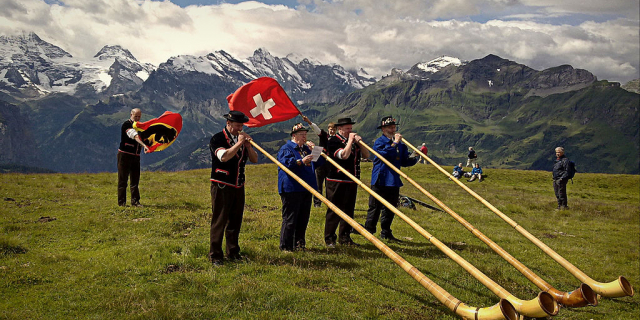











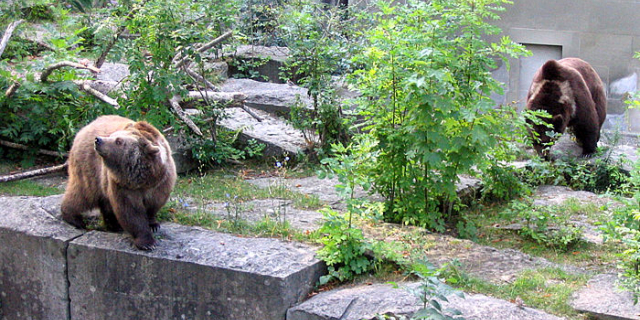










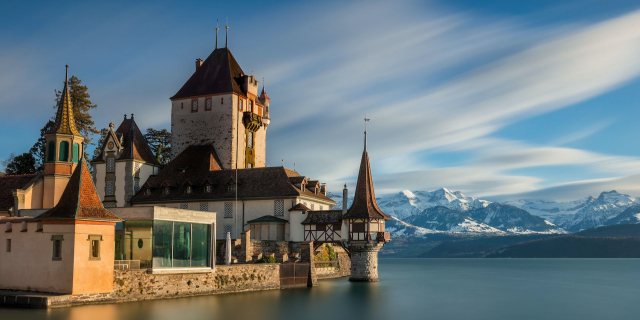



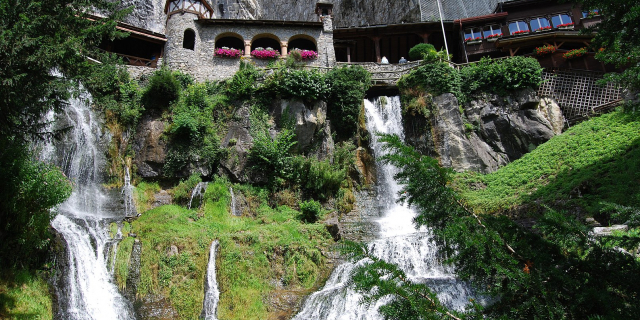

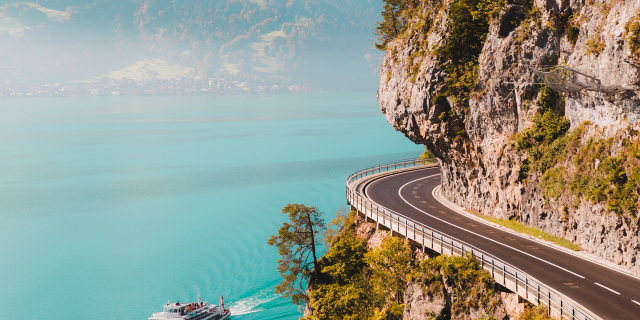





Add new comment